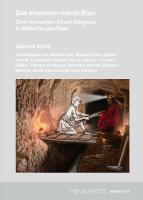Das Imperium macht Blau. Zum römischen Azurit-Bergbau in Wallerfangen/Saar
Keywords:
azurite, resources, pigments, colours, mining, mining archaeology, Roman Imperial Age, Saarland, GermanySynopsis
Azurite from Wallerfangen/Saar was a highly sought-after commodity, and this blue copper mineral was mined in Wallerfangen in the Roman period, the Middle Ages and modern times. In all periods, azurite from Wallerfangen was primarily used as a blue pigment, for example in wall paintings. After initial excavations especially in the so-called Upper Emilianus tunnel in the 1960s, carried out by the Saarland heritage management agency [Konservatoramt des Saarlandes], Roman mining in Wallerfangen developed into a focus project at the Deutsches Bergbau-Museum Bochum. In the 1990s, Prof. Dr. Gerd Weisgerber explored the so-called lower Emilianus tunnel. Between 2003 and 2019, the author – Dr. Gabriele Körlin, the deputy head of the research unit on mining archaeology – investigated the Bruss tunnel over the course of 13 campaigns. The project focused on studying Roman mining and its remains, as well as on the mining technologies used and on the expected level of azurite production. Although these mines only represent a fraction of the area exploited by the Romans in Wallerfangen, numerous insights were gained, amongst others into drift and mining, the tools used, water management and so on. Unusually, water management amongst others involved an overdimensional gullet. The Roman occupation inscription of Emilianus deserves to be stressed, as it forms a unique characteristic of the Wallerfang mining area. Geophysical prospection in the immediate surroundings of the Bruss tunnel supplement the excavations below ground. The present publication showcases the results of the excavations focused on Roman mining archaeology, integrated within the archaeological context of the wider region.




